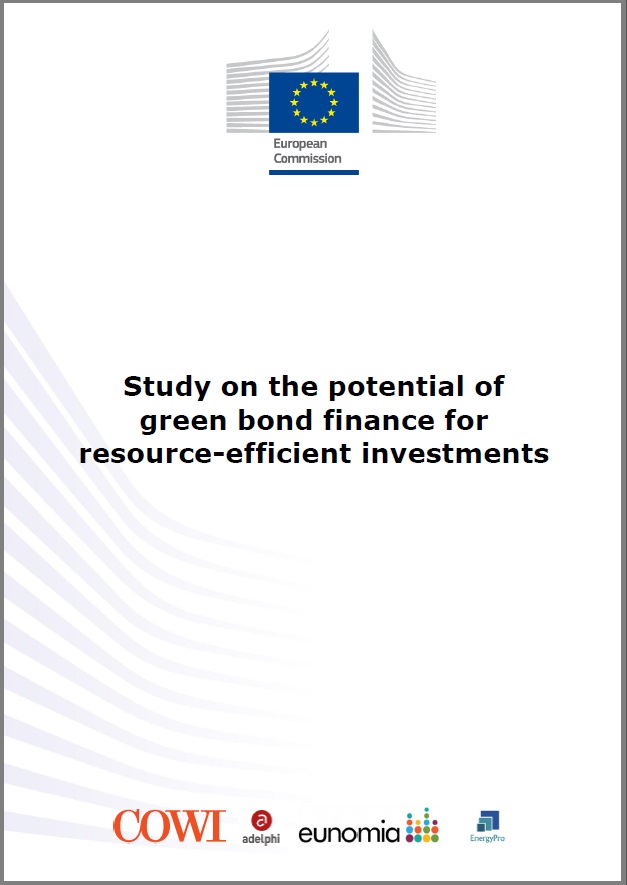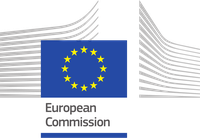Study on the potential of green bond finance for resource-efficient investments
ABSTRACT
Green bonds could play a key role in helping to finance the investment needed to achieve the EU’s 2030 Climate and Energy objectives and the UN Sustainable Development Goals.
This report presents an analysis of the development and functioning of the green bond market, including the main actors and sectors, with specific focus on financing investments into improved resource efficiency. It summarizes the key bottlenecks limiting the development of the market in specific countries and sectors. It identifies a set of possible public sector measures to overcome these bottlenecks, supported by examples of good practices. The report also assesses the regulatory feasibility and expected impacts of specific standardization options on the liquidity and size of the market. Finally, the report presents a set of recommendations addressed at the EU and its Member States.
A Policy Toolbox provides additional detail on possible public sector measures on the demand and supply side. Nine country case studies support the analysis, focusing on Bulgaria, France, Germany, Italy, the United Kingdom, as well as China, Mexico, Norway, and the United States.
EXECUTIVE SUMMARY
A green bond is differentiated from a regular bond by its label, which signifies a commitment to exclusively use the funds raised to finance or re-finance "green" projects, assets or business activities. Green projects are projects that promote progress on environmentally sustainable activities. Green bonds provide an opportunity to mobilize capital for green investments. They offer an opportunity to investors to make informed, explicit decisions to invest in green projects. Green bonds are a means of attracting new investors and hence mobilizing liquidity for green investments.
The main actors in the market1 can be categorized as issuers (entities with green projects needing funding or refunding), underwriters (financial institutions arranging the issuance of the green bonds), external reviewers (verifying the "greenness" of the underlying projects) including rating agencies, intermediaries (such as stock exchanges), and investors (particularly those with a mandate to invest in green assets). Issuers of green bonds may benefit from reputational gains2 and upgraded environmental risk management processes due to commitments to green disclosure. On the other hand, bond investors, especially long-term and responsible investors, are provided with an emerging class of green assets and more opportunities to actively engage with issuers on ESG (Environmental, Social, Governance) factors related to the financed projects.
The green bond market can provide an additional source of green financing to bank lending and equity financing, and enable long-term financing for green projects in geographies where the supply of long-term bank loans can be limited. Today, green bonds mainly finance projects within renewable energy (45.8% of the issuance globally in 2015), energy efficiency (19.6%), low carbon transport (13.4%), sustainable water (9.3%), and waste & pollution (5.6%). The demand for green bonds has been growing exponentially with pension funds and insurance companies diversifying their investment portfolios. The total issuance of green bonds was USD 41.8 bn. in 2015 and reached USD 65.4 bn. by November 2016. In the light of the global commitment to shift to a low carbon economy, the green bond market is likely to continue to grow, while attracting more diverse issuers and investors.
Key developments in the evolution of the green bond market have included:
• The green bond market emerged in 2007-08 with the first few issuances by Multilateral Development Banks.
• Private sector issuers, including corporates and banks joined the market in 2013-2014, supported by the launch of the Green Bond Principles. From 2013, there was a surge in the issuance of labelled green bonds.
• More countries joined the green bond market in 2015, contributing to a total annual issuance of USD 41.8 bn. Corporate green bonds accounted for 36% of the issuance – the highest share ever, followed by municipalities with 15% and by banks with 12%.
• Today, the annual green bond issuance continues to grow rapidly and current estimates for 2016 range from USD 70 to USD 100 bn., with much of this growth being the impact of Chinese issuers in the market.
1 The referred main actors are active in both the primary and secondary bond markets. See more details in the Glossary (Annex A)
2 For example, corporate issuers of green bonds whose business model is not oriented towards developing sustainable solutions can flag a responsible and long-term oriented product to investors.
To download the full report, please click here.

